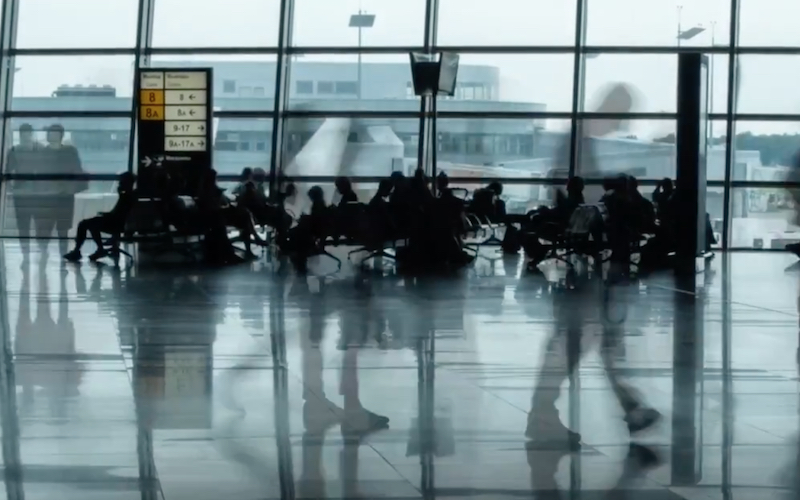
The World’s Airports and Airlines Need More Human Intelligence
This week’s restrictions on larger electronic devices in carry-on luggage from many of the Middle East and North Africa’s largest airports by the governments of the US and UK is an effort at making it more difficult for terrorists to attempt to blow up airplanes at will. Whether the restrictions are based on intelligence reports, recent event history, the application of common sense, or some combination of all of them, it is yet another incremental step in the direction of attempting to ensure the safety of the flying public. But one could certainly argue that it is also like placing a band-aid on a gaping wound while creating more of a false sense of security in a system that is rife with gaps, inconsistencies, and vulnerabilities.
One irony, of course, is that almost none of the airports and airlines impacted by the regulation are in failed states, where there is ample reason to presume that the air transportation infrastructure does not come close to meeting U.S. Federal Aviation Administration security standards. And, as has been demonstrated numerous times in recent years, the US Transportation Security Administration (TSA) has itself failed to live up to its own security standards. For example, in a nationwide test in 2015, the US Department of Homeland Security’s (DHS) Office of the Inspector General was able to successfully transfer mock explosives or banned weapons through airport security screening systems 95 percent of the time.
Also in 2015, only two major US airports made comprehensive employee screening part of their operational protocol — meaning that all other major airports in the country do not do so. Another DHS investigation found that the TSA had failed to identify 73 employees of airlines, airport vendors, and other employers with active clearance badges who had links to terrorism. In other words, the TSA was inadvertently sanctioning the employment of individuals with terrorist links to work in roles that could endanger the US public. So, the US is not exactly in a position of authority in terms of setting the gold standard for airport and airline security.
While it should be presumed that the U.S. government has good intelligence-based reason to single out the airports and airlines that it did in its action, there are a number of problems with the approach. Among them, other airports and airlines from failed states, or from countries which are known to be a safe-haven for terrorists, are not included in the restrictions. There is also little to prevent a terrorist who might otherwise have chosen the subject airports and airlines to simply choose another origination point or airline. The restrictions may also ultimately backfire, and encourage terrorists to seek even more sophisticated means of targeting commercial aviation in the future.
What would be even more useful than imposing additional passenger restrictions would be for airport and airline security officials to adopt protocols that not only integrate the latest intelligence, but also the ‘human’ factors that have made Israel’s El Al Airlines so successful at thwarting potential attacks. All vehicles that arrive at Ben Gurion Airport must first pass through a preliminary security checkpoint where armed guards search the vehicle and exchange a few words with the driver and occupants to gauge their mood and intentions. Plain clothes officers patrol the area outside the terminal building, assisted by sophisticated hidden surveillance cameras which operate around the clock. Armed security personnel patrol the terminal and keep a close eye on people entering the terminal building. If any persons seem suspicious or anxious, security personnel will approach them and engage them in conversation in an effort to gauge their intentions and mood. Vehicles are subject to a weight sensor, a trunk x-ray and an undercarriage scan.
Departing passengers are questioned by highly trained security agents before they reach the check-in counter. These interviews could last as little as one minute or as long as an hour, based on such factors as age, race, religion and destination. Unlike in many western airports, passengers are not required to remove their shoes while passing through physical screening processes. Furthermore, there are no sophisticated x-ray machines; rather, traditional metal detectors are still in operation.
The passenger-oriented security system is more focused on the ‘human factor,’ based on the assumption that terrorist attacks are carried out by people who can be found and have been stopped through the use of this simple but effective security methodology. That said, there is a great array of equipment and technology available for the authorities to help combat any potential terrorist attacks. For example, checked baggage is put in a pressure chamber to trigger any possible explosive devices and robots patrol the airport grounds.
Ben Gurion airport does not sub-contract its security to private companies. Given their priority in ensuring safety and preventing terrorist attacks, the personnel on duty at Ben Gurion are highly trained army graduates who have specialist skills in detection and interrogation. They leave nothing to chance and are able to monitor the most minute details. Officials think of passenger security as a series of ‘concentric’ circles, with increasing scrutiny as individuals arrive closer to the plane.
Agents also pay close attention to the parts of the airport that passengers do not frequent, such as fences around the airport’s perimeter, which are monitored with cameras at all times, and radar systems that check for intrusions when weather prevents cameras from effectively broadcasting. The Israelis’ focus on the human factor is not of course infallible, but the range of methods employed at Ben Gurion has proven to be extremely effective in preventing terrorist attacks, as its history demonstrates. Even so, many security and terrorist experts believe that, if this were always accompanied by the latest passenger-oriented security technology, Ben Gurion’s security would be even more robust.
The Israelis have taken on board the concerns of civil liberties groups and researchers in developing technology that could ease concerns about racial profiling, through the use of innovative check-in kiosks, but this can never of course replace the intuition and gut instinct that accompanies human interaction. Many airport authorities around the world have sought to benefit from the Israelis’ approach to airport security, though none use the entire range of tools at their disposal. In the end, limitations on financial and human resources, and preferred methodologies, determine just how thorough or inadequate security protocols can be.
If more airport authorities were to adopt Ben Gurion’s approach, surely it would be more difficult for those intending to do harm to succeed. There is a lot to be said for emphasizing eye contact, behavioral cues, and instinct when addressing the subject of airport security. Rather than continuing to implement ever broader restrictions on law abiding passengers, governments would perhaps be better off devoting the resources necessary to focus on the human intelligence and other protocols that very few airports and airlines actually provide, and that the Israelis have proven work very well.
This article was originally posted in The Huffington Post.

